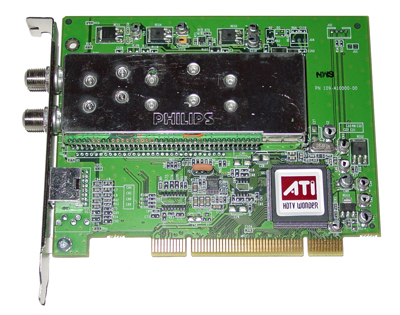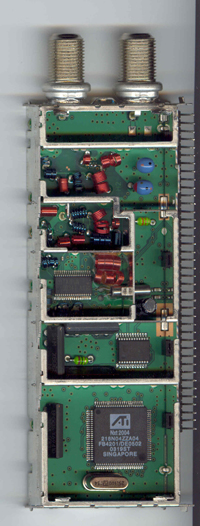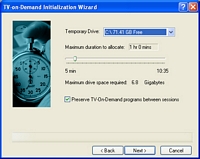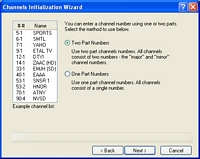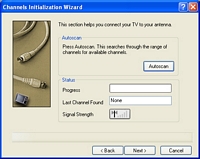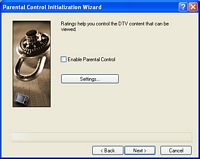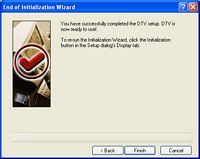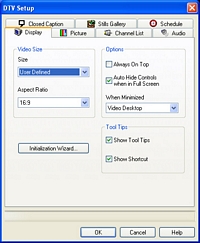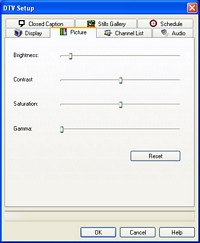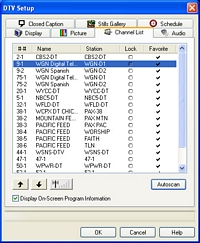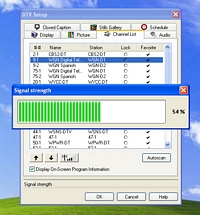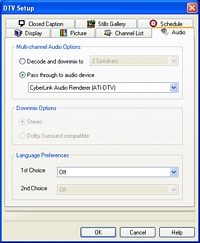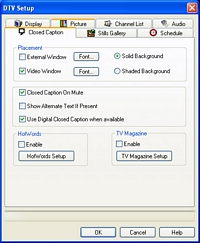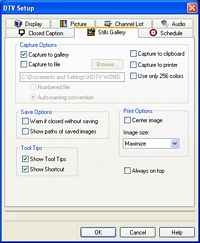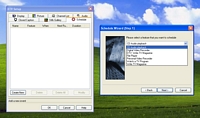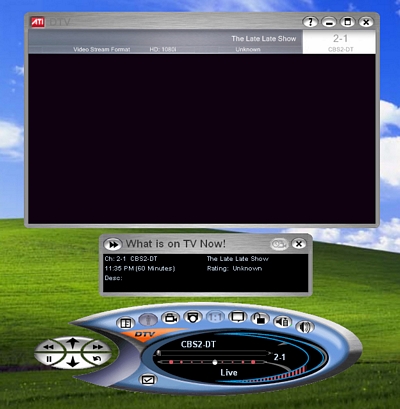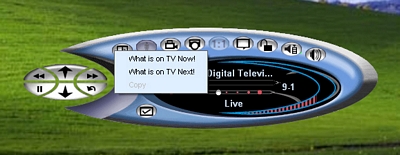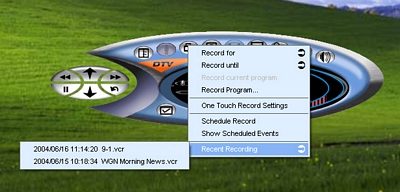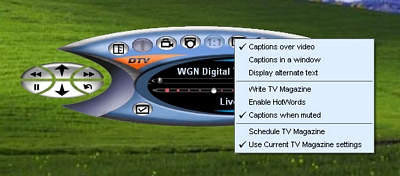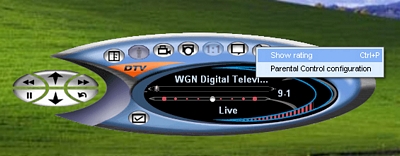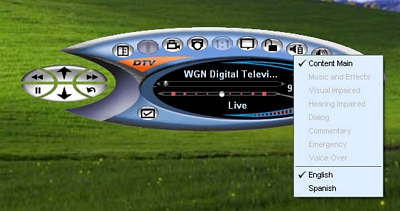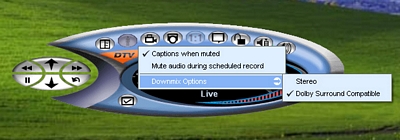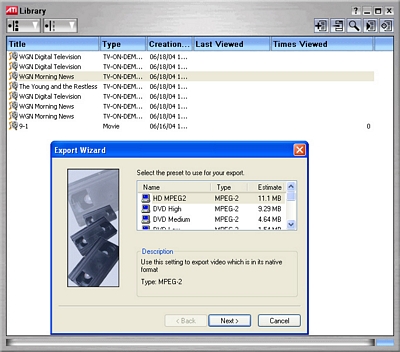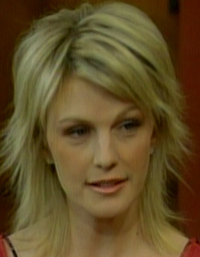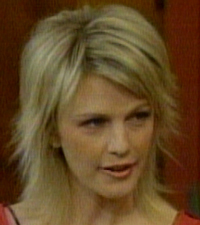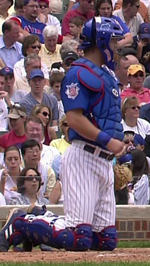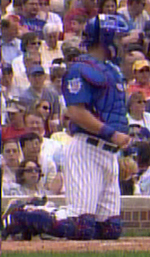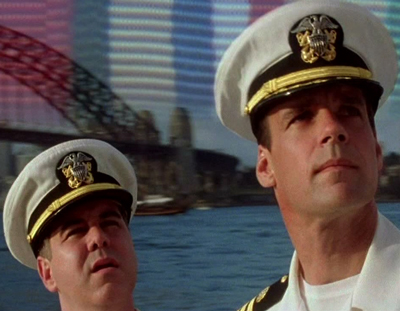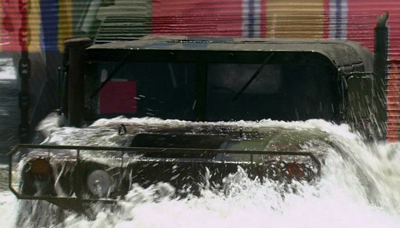
Original Link: https://www.anandtech.com/show/1359
ATI's HDTV Wonder - Bringing DTV to your PC
by Andrew Ku on June 22, 2004 8:00 AM EST- Posted in
- GPUs
With HDTV slowing becoming the standard in broadcast television, every company making TV tuners have started to make the shift. Just drop by any Best Buy, Fry's, or Circuit City, and you can already see HDTVs becoming the predominant television stock. The US government is vying for a complete overhaul of broadcast television to DTV (not the same as HDTV) by May 2006, which means that there is some time before your regular boob tube becomes an extinct species.
The home theater PC (aka HTPC) has always been a niche market, and just recently in the past couple of years, it has started to make strides into the mainstream, mainly with Microsoft pioneering their Media Center Edition OS. Currently, the PC market is the fastest growing field for TV companies, but this has several implications. Since the traditional TV market for the entertainment room has been basically fully developed, it means that TV products made for the PC market are always going to be a bit behind the first.
This is the reason why HDTVs have come out in such force, while HDTV tuners for the PC have rarely been heard of. In fact, the only major company that we are aware of making an HDTV tuner for PCs is Hauppauge, but the WinTV-HD hasn't sold in the same volumes for Hauppauge as their analog WinTV tuners. Add in the vacuum of HDTV supported multimedia software (MCE, Beyond TV, SageTV, Multimedia Center, Forceware Multimedia, etc...), and you get a recipe for a PC market not ready to embrace HDTV technology.
This vacuum of HDTV for PCs is precisely the reason why we have been waiting for ATI's HDTV Wonder. Announced a while back (February 17, 2004), today ATI unleashes their doors and finally brings their HDTV tuner to market, bringing both hardware and software support for HDTV technology to the PC multimedia world.
The Test
The system requirements for the HDTV Wonder are stiffer than for ATI's TV Wonder based products. This is because the quality of HDTV technology makes it more taxing on the system's configuration.| System Requirements | |||
| TV Wonder VE | TV Wonder Pro | HDTV Wonder | |
| Processor(s): | Intel® Pentium® 4/III/II, CeleronTM, AMD K6 or compatible | 1.3GHz processor | |
| RAM: | N/A | N/A | 256MB |
| Form Factor: | PCI | ||
| FM Tuner: | No | ||
| Stereo Tuner: | No | Yes | Yes |
| Graphics Card: | Basically all cards supporting DirectX overlay | DirectX9* | |
| Audio/Video In: | Composite | Composite, S-Video | Composite, S-Video |
| TV-On-Demand: | No | No | Analog and HDTV |
| HDTV support: | No | No | Yes (and all DTV resolutions) |
| Remote: | No | No | Remote Wonder |
| MSRP: | $49 | $69 | $199 |
* Based on our last discussion with ATI. Details are being finalized, but this should be the bottom line requirement. However, Radeon 9500 or equivalent and above are recommended by ATI because of the HDTV Wonder's performance characteristics and requirements. Non-ATI cards will not be able to support the EazyLook, EazyLaunch, and ThruView features. Using something like an MX 440 or FX 5200 will just require the system to dip into more CPU resources, which is why ATI is implementing a DX9 support requirement. Support beyond DX9 is being discussed, but since it requires more time and effort, if and when it happens, it will be down the road.
Our own test setup was based on a P4 2.8GHz system with 512MB of system memory and a Radeon 9600 XT.
HDTV Wonder - The Card
The card that we received was technically a non-qualified sample, but since we are testing function capability and features rather than performance, this really isn't an issue. Like the past TV Wonder products, there is no MPEG2 decoder on this card, which is one of the reasons why it can't be used with software like SageTV 2.0.ATI chose to use the Philips TUV1236D HDTV compliant tuner on their HDTV Wonder. Philips uses an ATI NXT2004 demodulator on all TUV1236D tuners, which serves to convert the DTV's 8VSB modulation transmissions to digital MPEG2 data. The NXT2004, as shown in the picture below, is actually on the back side of the tuner, and cannot be accessed without probably damaging the tuner. Note that the HDTV Wonder supports all ATSC supported DTV resolutions, not just the HDTV ones.
If you don't remember, sometime in the last half of 2002, ATI acquired the NextWave company as part of their move to get more into the multimedia arena, as NextWave was already producing demodulators.
Since analog TV signals will still be around for some time, ATI has wisely decided to continue support for this standard. The HDTV wonder comes with one RF connector for DTV (the one on the right in the picture) and one for a cable/antenna hookup (left RF connector). Like the TV Wonder Pro, the HDTV Wonder supports audio/video in (composite and s-video) via their "love it or hate it" purple breakout box (included).
ATI already knows that you must be asking about a DTV All-in-Wonder possibility (as we were), and they have prepared a response in their HDTV Wonder's FAQ:
...One of the most obvious reasons involves size: the HDTV tuner solution is significantly larger than the current tuner on an All-in-Wonder board. Attempting to make such a large tuner fit on an All-in-Wonder board would result in sacrificing some of the All-in-Wonder's great feature set and performance. Another reason for separating the HDTV tuner from the graphics processor is to maintain signal integrity of the digital signal. Connecting the tuner to the demodulator is a sensitive matter that is easily impacted by electrical noise...Does this mean that with the full analog to DTV switch, All-in-Wonders will become extinct? Not likely; AIWs are still a good bread-and-butter source for ATI's multimedia team. With ATI's progression in their developments within the graphics and multimedia field, it is likely that both of these hurdles will be overcome in the future, and the full switch will be far from complete, which means that ATI still has quite a bit of time to figure things out.
DTV Player - DTV Time-shifted
In order to accommodate the new functionality needed for the HDTV Wonder, ATI had to create a separate program for DTV viewing, since the TV player was designed to view and render analog signals. Obviously, a single program for dual purposes would be perferred, but the special characteristics that DTV signals transmit make us understand the need to divvy the programs.Analog TV transmits at 640 x 480 (with a 4:3 ratio), while HDTV transmits at 16:9 (widescreen). We aren't going to get into the how's and why's of DTV, since that is a subject apart from this one. We recommend that you read the information at How Stuff Works for an overall view, Discovery Channel, and HDTV.net for a simple explanation. For the computer user, this means that on most computer monitors, you are going to have to deal with unused space in order to keep the native perspective.
The DTV player makes its way into Multimedia Center 9.0, and the launchpad is adjusted accordingly with the addition.
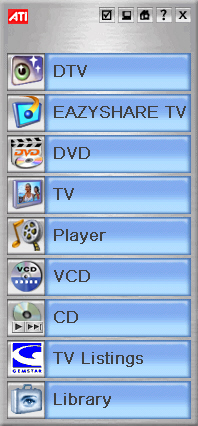
Assuming that you are launching the DTV player for the first time, you are prompted with an intuitive set-up wizard, similar to the one used for the analog TV player. The only noteworthy difference is that channels are named differently and there is a signal strength indicator.
As a factor of free disk space, the DTV player can have varying disk space estimated requirements for TV-On-Demand. When we got down to about 58GBs, the maximum disk space required for 1 hour was 5.1GBs.
DTV Player - DTV Time-shifted (continued)
There are additional set-up options for the DTV player once you right click on the DTV window and select "setup". Unlike the TV player for MMC, the DTV player actually will automatically add channels if it detects them on their own without having to select "scan". Keep in mind that unlike analog signals, DTV signals contain quite a bit of information and thus, there needs to be a strong signal to actually watch the TV feed. This is why there is a signal strength indicator on the channel list set-up page. In our experience, anything below 50% is basically moot, and 50% to 65% is a bit skippy. If you want a constant DTV feed, you need to be at 65% or greater.Because cable and satellite HDTV signals are encrypted, the HDTV Wonder is unable to pick up these signals. In almost all cases, you need a configured set-top box to pick them up, which is something that ATI cannot do for each and every HDTV Wonder customer. Therefore, the HDTV Wonder is limited to terrestrial DTV broadcast signals, which can be picked up by any UHF antenna.
ATI includes an antenna for you to use with your HDTV Wonder, but we found it needed to be placed close to a window and high up as possible for it to get most of the signals in our area. We ended up using our rooftop UHF antenna that most people already have on their homes, which picked up several more signals than our included antenna. In the Chicago-land area, we got the channels listed below, but there were channels like WPWR-DT that, while detected, had incredibly bad reception (20% range). While we didn't fiddle with our rooftop antenna, bad reception is either because of antenna placement (i.e. direction) or the distance of the broadcasting antenna.
DTV signals can support 5.1 channel surround sound assuming that the program being viewed is broadcasted with a 5.1 channel surround sound stream. Stuff like commercials in a program with a 5.1 channel surround sound stream will have that 5.1 channel surround sound support. However, none of this is possible unless you have a 5.1 channel compatible sound card.
Like the TV player, the DTV player also supports HotWords and a TV Magazine, the latter of which we find to be a much more useful feature. The benefit of the DTV Magazine is that you will get much crisper pictures in your magazine document.
DTV Player - DTV Time-shifted (continued)
If you are watching DTV content within the DTV player, you get ATI's permanent indicators like in the TV player. The only problem we had was that sometimes we didn't pick up the parental rating for a TV program, but this seems to be a result of the broadcaster rather than ATI's HDTV Wonder or DTV player.Because DTV streams contain more data than analog signals, broadcasters also distribute program information, which is why ATI doesn't need GuidePlus' Gemstar EPG for the DTV player. The limitation is that the broadcast program guide information is limited to the currently playing program or the one following it. For a more comprehensive listing, an EPG is still needed, which is why we were constantly referring to the installed EPG to find what and when something was playing (we just checked the equivalent analog signal in the EPG).
Whether it is a good or a bad thing, ATI has decided to implement TV-On-Demand/time-shifting for the DTV player. This option cannot be disabled. And because time-shifting is always on, there needs to be hard drive space allotted specifically for ATI to perform temporary storage in their proprietary VCR format (format cannot be changed for time-shifting).
The preset storage location for all DTV timeshifted and recorded content (scheduled or manually recorded) is on C drive at C:\document and settings\application data\ATI MMC. If you select X drive in the set-up wizard, the DTV player will simply create a X:\document and settings\application data\ATI MMC data path for storage. We recorded a typical hour long HDTV show in 1080i format with non-HDTV commercials that ended up being 8.7GB (actually 1 hour and 5 minutes long to catch trailing content). With a 100% 1080i 30 minute segment of a baseball game, we were running at about a 4.2GB file.
Another benefit of DTV signals is that broadcasters can send out multiple audio streams for a signal program, which is mainly a benefit for those who need to hear the program in another language.
DTV Player - DTV Time-shifted (continued)
Because ATI always has time-shifting on for the DTV player, all recorded and time-shifted material is done in ATI's VCR format. In order to view the HDTV program in MPEG4, MPEG2 (DVD and SVCD), or MPEG1 (VCD) files, you are going to have to transcode the file via ATI's library program (all TV-On-Demand and recorded DTV content is automatically added to the library). Things have changed a bit since ATI's Multimedia Center 8.8, where the transcoding was a two-click process starting with a right click. Now, ATI has moved the transcoding options to an export wizard for VCR files that can be selected by right clicking any of the VCR files.Transcoding can be done for other files, but obviously, there are limitations for transcoding certain files due to quality issues (i.e. MPEG-1 should be only be transcoded to MPEG-4). In MMC 8.8, the library gave no options for you to transcode from MPEG-1 to anything other than MPEG-4, but you can force the transcode with the export wizard. However, recommended transcoding options will be provided for non-VCR video files in the right click menu.
The problem we had with converting the DTV recording to some other format (other than the HD MPEG2 preset) was that we lost the DTV's native resolution. In this case, our show was 1080i 16:9, and when we went to VCD quality, the resolution got squished. We would like to have the ability to create presets such as a 16:9 low resolution MPEG4 file, or presets that take this into account. The only native resolution preset currently is HD MPEG2, which still requires a significant amount of CPU resources. We weren't even able to play files using this conversion format on our fully decked out Inspiron 8600 (1.7GHz) with MR9600Pro without partial motion skippage and full CPU usage. ATI tells us this will be resolved in the near future.
HDTV Wonder & DTV Player - Quality Upgrade
You may notice that in the DTV player, you get black bars in the window; this is because not all content broadcasted is actually HDTV content. Commercials, generally speaking, are not in HDTV resolutions, but they are in some sort of a DTV resolution (either EDTV or SDTV), so broadcasters have to add in black bars to maintain a native HDTV resolution. This is why you get black bars in the window sometimes. This rule applies to DTV programs that are also in EDTV or SDTV resolutions. If you own an actual HDTV set, you don't see these black bars because the HDTV manufacturer includes coding that manipulates the image into the native 16:9 HDTV resolution.Technically, commercials are converted from an analog format to a digital format, but they look better in a DTV environment because analog viewing generally has noise/interference that makes the signal look worse. You can see the difference particularly when you get to instances of commercials using bright colors.
Keep in mind that we are capturing a HDTV screenshot at the native 1080i resolution (16:9 widescreen) with a roughly 65% to 71% signal strength, and analog TV streams via analog cable at the standard 640 x 480 (4:3 ratio) with a ATI All-in-Wonder 9600 Pro on another system. If you are watching TV full screen with the TV player at 1280 x 1024 on your computer monitor, the computer scales it upward, which is another reason why TV looks poor on a computer. If you watch DTV on your computer, you are most likely scaling down because at 1080i, the signal is being broadcasted at like, 1920 x 1080. This is the same effect that you get when you start with a picture at 800 x 600 and try to either enlarge it or make a thumbnail.
|
|
|

DTV converted commercial
Click to enlarge.

Analog format commercial
Click to enlarge.
Analog converted to digital programs also follow the same rule. People look better and more distinguishable, but you still will run into the bar issue with analog to DTV converted programs.
|
|
|
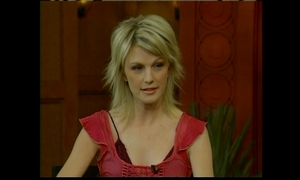
DTV converted program
Click to enlarge.
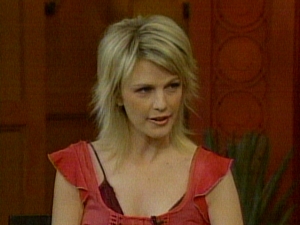
Analog format program
Click to enlarge.
HDTV Wonder & DTV Player - Quality Upgrade (continued)
Now, as for the true blue HDTV broadcast programs, the difference between the analog and digital qualities are amazing. First up is a comparison based on a Cubs game that we were watching broadcasted in 1080i. Keep in mind that with HDTV, you are viewing more picture area because of the 16:9 widescreen format, as opposed to the analog 4:3 format, which is one of the reasons why it is hard to get thumbnail comparisons completely identical. Our comparisons are based on screenshots that have been cropped and shrunk to get a close resolution comparisons; there has been no enlarging.You probably can guess which is HDTV and which one is analog TV. The grass actually does look greener on other side of the fence.
|
|
|
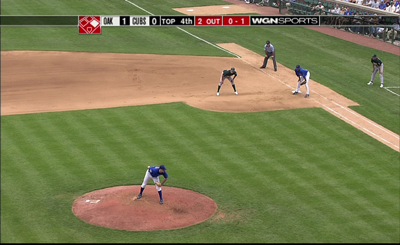
Cubs' game broadcast in 1080i
Click to enlarge.
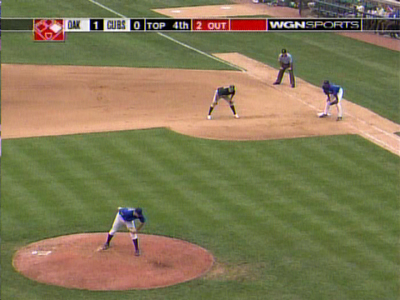
Cubs' game broadcast in analog 640 x 480
Click to enlarge.
Note the audience in the background. You can actually make out and visually distinguish people apart. If you had friend at the game, HDTV gives you the capacity to pick them out of a crowd. With HDTV, the colors become more vibrant and brilliant, so the TV experience is at its best.
|
|
|
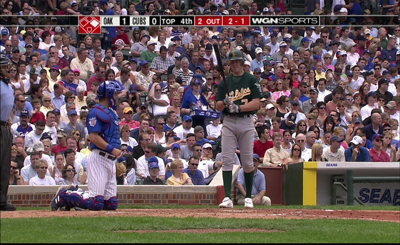
Cubs' game broadcast in 1080i
Click to enlarge.
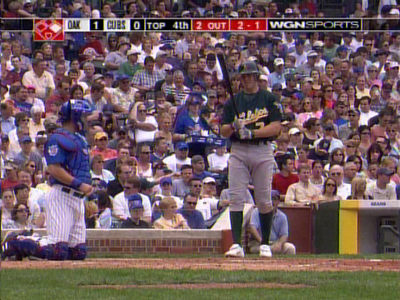
Cubs' game broadcast in analog 640 x 480
Click to enlarge.
HDTV Wonder & DTV Player - Quality Upgrade (continued)
On to TV shows... We took a few snapshots off of JAG, which shows the difference between HDTV shows and analog broadcasts in a different light, particularly the better defined facial expressions.
JAG in analog
Click to enlarge.
Take a look at the water in the shots below. In the first shot, you can actually distinguish the crystal, foamy, etc. characteristics of the water cascading off the Humvee. In the second shot, you can tell it is water, but it isn't like you can "feel" it.
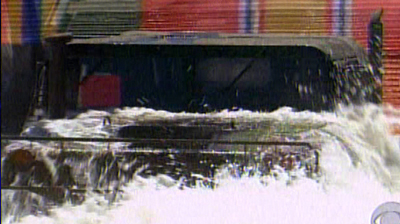
JAG in analog
Click to enlarge.
Text is also defined better in HDTV; it is like watching it off a DVD.

JAG in analog
Click to enlarge.
Final Words
With the DTV overhaul already taking place, it was just a matter of time before PC HDTV tuners became the popular stock. The biggest problem that companies like ATI are going to run into is the price tag, which would put some into sticker shock, as the HDTV Wonder costs a cool $199, considering that you can buy an analog antenna/cable TV tuner for under $50, easily.Putting it into perspective, an HDTV Wonder is a much cheaper solution than purchasing a decked out HDTV or even one of the cheaper models. If this is intended to be used as an HTPC component, EazyLook provides the 10-foot viewing mode for the DTV player, but you are going to have to consider the fact that HTPCs consume more electricity over a typical TV or even HDTVs.
At its worst, you are going to view DTV content at the same quality as a DVD movie. So when it comes to quality, you really can't go wrong with an analog to DTV upgrade. But since analog broadcasts/cable feeds are going to be around for some time, we are glad to see two tuner components on the HDTV Wonder: one for analog and one for DTV content.
Though ATI has the hardware part of HDTV Wonder down, there needs to be a few improvements in the software. Most notably, we would like the ability to record into the map preset recording settings similar to the TV player. And as far as we have been told, EazyShare DTV support should come down the line, which means that you should look forward to sharing DTV content throughout your local network, like you can with the analog signals (EazyShare TV).
| While we would like to see support for HDTV [digital] cable/satellite signals, we understand the legal and logistical reasons why ATI cannot support them. Though, we still hope that someone in the near future will provide a product that can. Either way, the HDTV Wonder is a great product that is still probably one of the best things to come from ATI's multimedia team within the past five or so years, which is why it takes our Editor's Choice Gold Award. Granted, it isn't the first PC HDTV tuner, but it probably is the only one that you are going to be able to buy from CompUSA, Circuit City, etc. for some time to come (should be available come early July). |  |
Companies like Microsoft, Snapstream, and Frey's Technologies (according to our last conversations with them) are at least a year away before they start to fully develop DTV technology for their multimedia software. True HDTV on MCE should be awesome, and this is just another thing that we are eagerly waiting for. But until then, the HDTV Wonder should provide a great and cheaper way of getting DTV into your home without having to break the bank by spending $1000+ on a HDTV.

